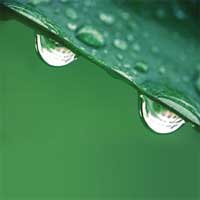Spray Additives
 Spray adjuvants (additives) are added to agrichemicals to enhance the performance or handling of those agrichemicals.
Spray adjuvants (additives) are added to agrichemicals to enhance the performance or handling of those agrichemicals.
While they are agrichemicals, adjuvants do not require to be registered under the ACVM. This means that anyone can mix up a concoction, give it a name, and sell it as an adjuvant. The best way to avoid a 'snake oil' is to buy a recognized name-brand product from a reputable supplier. If the claims sound too good to be true, they probably are.
The main types of adjuvant and their uses are:
1. Surfactants (surface-active agents)
These chemicals modify the surface properties of materials they contact. The major surfactant types are:
- Emulsifiers promote the suspension of liquid in another; they are most commonly used to disperse oil in water.
- Wetting agents reduce the surface tension of the spray droplet, thereby increasing the contact between the spray droplet and the leaf or insect surface.
- Spreaders cause the surface tension of the spray droplet to be reduced in such a way that it easily spreads into a very thin film over a surface.
- Stickers cause the pesticide solution to adhere to the leaf surface, resisting rain, evaporation and runoff.
2. Penetrants
Penetrants (super spreaders, organosilicone spreaders) dissolve or penetrate waxy layers on leaves and allow other chemicals to interface with plant cells and enter the spaces between them. They are designed for use with systemic and translaminar herbicides.
3. Drift reduction agents
Reduce the drift from the agrichemical by enlarging the droplets or reducing evaporation
4. Dyes and spray markers
Used to identify the areas that have been sprayed
5. Antifoam agents (foam suppressants)
Antifoam agents suppress the foam formed when pesticides are agitated in the spray tank.
6. Buffers and acidifiers
These adjuvants usually contain phosphate salts used to adjust the pH (acidity or alkalinity) of a spray solution.